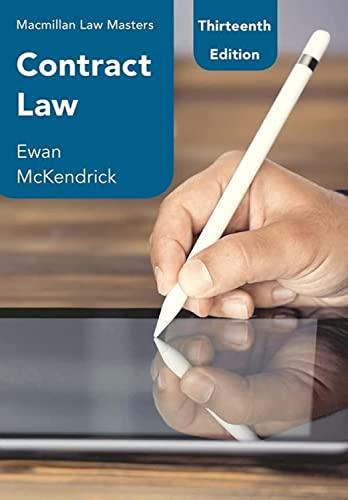Question
My question is: Why have the courts developed the concept of non-marriage and how have they defined the boundary between it and a marriage that
My question is: Why have the courts developed the concept of non-marriage and how have they defined the boundary between it and a marriage that is either valid or void?
- General remarks
Material for this question comes from 2.1 and 2.2.3 of the study guide. This question is about the formalities of marriage and non-marriages. What are they? How are non-marriages different from void or voidable marriages? Why has the court 'created' them? It requires knowledge of the case law on validity of marriage and an analysis of the differences between non-marriages and void marriages but, importantly, it also requires some analysis of why the courts have developed the concept of non-marriage.
- Law cases, reports and other references the examiners would expect you to use
Sections 25 and 49 Marriage Act 1949, s.11 MCA and cases such as Gereis v Yagoub and Bath. The leading case on non-marriage is Hudson v Leigh and other cases include MA v JA.
- Common errors
Failing to show understanding of non-marriage and how it is different from void marriage. Many students took this question to review ss.11 and 12 MCA without discussing adequately the developing idea of non-marriage.
- A good answer to this question would...
first discuss the different implications of a finding of non-marriage versus one of void or voidable: primarily the ability to seek financial relief. It would then discuss the formalities and intention required to find a marriage void and the confusion sometimes caused by failing to comply with them; illustrated by cases such as Gereis v Yagoub and Bath. It would discuss the leading case on non-marriage Hudson v Leigh and others, such as MA v JA and, given the need for certainty, question whether a line between void marriage and non-marriage is clear. Strong answers would discuss why non-marriages might be found, such as in
difficult duress cases where the time limit has passed or in cases of forced
marriage, for example, as in B v I.
Step by Step Solution
There are 3 Steps involved in it
Step: 1

Get Instant Access to Expert-Tailored Solutions
See step-by-step solutions with expert insights and AI powered tools for academic success
Step: 2

Step: 3

Ace Your Homework with AI
Get the answers you need in no time with our AI-driven, step-by-step assistance
Get Started


